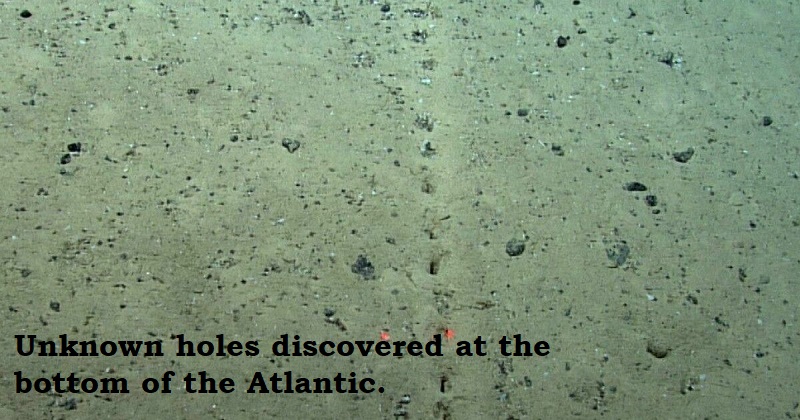
Scientists are baffled by a series of holes discovered on the seafloor along a volcanic ridge in the middle of the Atlantic Ocean. The cause of these holes, which are 2,540 feet below the surface, is unknown.
One of the least studied regions of the globe is the ocean, which harbours not only the mysteries of life but also unusual flora and fauna that can survive in freezing circumstances at depths where the pressure may kill you in a matter of seconds. We know more about the Moon than the oceans, and a brand-new mystery has marine experts baffled.
While the holes look human-made, the team that observed them at the bottom of the ocean says that the piles of sediment around them suggest they had been excavated. Marine researchers during the Voyage to the Ridge 2022 expedition attempted to look into them but were not successful.
The team has now opened discussion on social media, calling for experts from around the world to give their opinion.
‘On Saturday’s #Okeanos dive, we saw several sublinear sets of holes in the seafloor. The origin of the holes has scientists stumped. The holes look human-made, but the little piles of sediment around them suggest they were excavated by…something. What’s YOUR hypothesis?’ they asked.
They have been hearing a wide range of theories, including those about aliens, an unidentified type of crab, and gas emerging from the ocean below.
According to NOAA Ocean Exploration, scientists have discovered similar unusual holes before. Several of these sets of holes were also discovered back in July 2004 while being explored at a depth of 2,082 metres (6,831 feet) during an expedition along the northern Mid-Atlantic Ridge.
Several comparable clusters of holes were also discovered in the Mid-Atlantic Ridge.
Then, in a publication, scientists emphasised these distinctive carvings and how these peculiar holes allude to gaps in our fundamental knowledge of mid-ocean ridge ecosystems. These holes were referred to as ‘lebensspuren,’ which is German for ‘life traces.’
‘The ultimate cause of the holes is still unclear, and in fact, the unknowns we face are frequently as profound and enigmatic as the ocean itself. Although we learn more about this ecosystem that is so essential to all of our existence with every mission to chart and explore the depths of the ocean,’ said the group in a release.
It will be interesting to learn what these holes indicate to marine experts, whether they are an opening to far larger depths under the surface or something that could push marine science into a new direction.

Post Your Comments